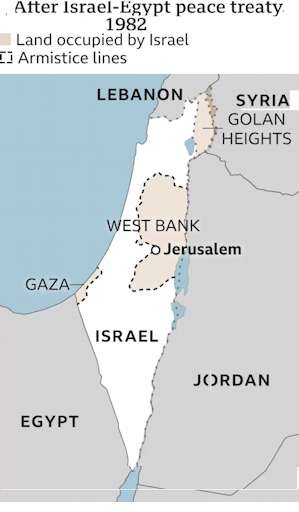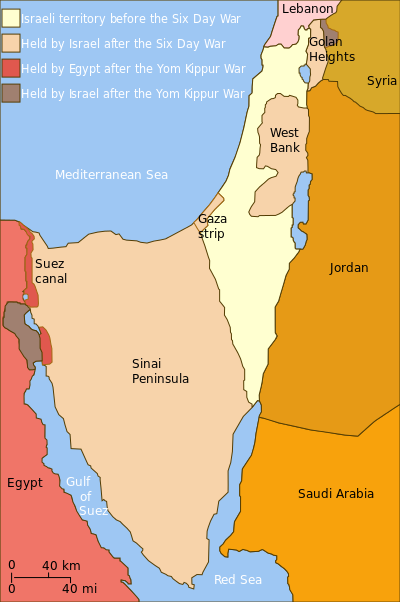 History
HistoryDon's Home
 History
History |
| See also: Israel/Palestine History | 2023 Israel Hamas War | Israel | Antisemitism | Bias in Arab-Israeli Conflict |
Contents: Intro | History | Human Cost
Introduction:
15 years ago, I looked into all the causes of unnatural death in this world, Famine, disease, natural disaster, accidents, war, gun violence, ...
Democide and wars was the top 2 causes in the last 100 years.
I did a page on terrorism and Arab Israeli Wars over the last 100 years as part of that.
The Israeli - Arab conflict is a combination of Terrorism, Democide and war.
History
1800's - The land of Palestine was peaceful with 86 percent Muslim, 10 percent Christian, and 4 percent Jewish .
Late 1800s - A jewish group in Europe decided to colonize this land. Known as Zionists, they represented an extremist minority of the Jewish population. Their goal was to create a Jewish homeland, and they considered locations in Africa and the Americas, before settling on Palestine.
1917 - At the end of WW I England issued the Balfour Declaration:
His Majesty's Government views with favor the establishment in Palestine of a national home for the Jewish people, and will use their best endeavors to facilitate the achievement of this object, it being clearly understood that nothing shall be done which may prejudice the civil and religious rights of existing non-Jewish communities in Palestine or the rights and political status enjoyed by Jews in any other country.1918 - After WWI the British and French carved up the old Ottoman Empire into spheres of influence and created the state of Palestine.
1939 Arab Revolt - A nationalist uprising by Palestinian Arabs in Mandatory Palestine against British colonial rule, as a demand for independence.
Ben Gurion however expressed Arab causes as fear from growing Jewish economic power, opposition to mass Jewish immigration and fear of the English identification with Zionism.
1945 - Although the United States supported the Balfour Declaration of 1917, which favored the establishment of a Jewish national home in Palestine, President Franklin D. Roosevelt had assured the Arabs in 1945 that the United States would not intervene without consulting both the Jews and the Arabs in that region.
Britain also opposed a Jewish state to preserve good relations with the Arabs.
1947 - Truman announced his approval of a recommendation to admit 100,000 displaced persons into Palestine and in October publicly declared his support for the creation of a Jewish state.
On November 29, 1947 the United Nations adopted Resolution 181 (also known as the Partition Resolution) that would divide Great Britain's former Palestinian mandate into the State of Israel, the Jordanian-held West Bank, and the Egyptian-held Gaza Strip.
Under the resolution, the area of religious significance surrounding Jerusalem would remain a corpus separatum under international control administered by the United Nations.
Under the plan 55% of Palestine would become the state of Israel - despite the fact that this group represented only about 30% of the total population, and owned under 7% of the land.
The US State Department expressed concern about an increasing Soviet roll in the Arab world, Possible oil restrictions and the growing conflict between Palestinian Arabs and Palestinian Jews.
Despite this Truman ultimately decided to recognize the state Israel.
Arab Israeli wars:
1948 - War of 1948
1956 - Suez crisis
1967 - Six-day war
1973 - Yom Kippur War
1987-1993 - First Intifada
1948 War:
The Arab-Israeli War of 1948 broke out when five Arab nations invaded territory in the former Palestinian mandate; The goal was to block the Partition Resolution and to prevent the establishment of the Jewish state..
The United States maintained an arms embargo against all belligerents.
Though the United Nations brokered two cease-fires during the conflict, fighting continued into 1949. Under separate agreements between Israel and the neighboring states of Egypt, Lebanon, Transjordan, and Syria, these bordering nations agreed to formal armistice lines. Israel gained some territory formerly granted to Palestinian Arabs under the United Nations resolution in 1947. Egypt and Jordan retained control over the Gaza Strip and the West Bank respectively.
By the end of the war, Israel had conquered 78 percent of Palestine.
Over 80% of the Arabs (three-quarters of a million) left the area that became Israel and many Jews immigrated to Israel. In 2010 Arabs were only 20% of the population of Israel.

As a result of Israel's victory in the 1948 Arab-Israeli War, any Arabs caught on the wrong side of the ceasefire line were unable to return to their homes in what became Israel. Likewise, any Jews on the West Bank or in Gaza were exiled from their property and homes to Israel.
The PLO (Palestinian Liberation Organization) was first established in 1964, under a charter including a commitment to "[t]he liberation of Palestine [which] will destroy the Zionist and imperialist presence..."
1956 - Suez Crisis
In 1956, Egypt closed the Straits of Tiran to Israeli shipping, and blockaded the Gulf of Aqaba, in contravention of the Constantinople Convention of 1888.
Egypt nationalized the Suez Canal Company, and closed the canal to Israeli shipping.
The United States and the United Nations soon pressured it into a ceasefire.[52][53] Israel agreed to withdraw from Egyptian territory.

On May 30, 1967, Six-Day War
Prior to the start of the war, attacks conducted against Israel by fledgling Palestinian guerrilla groups based in Syria, Lebanon, and Jordan had increased.
Jordan signed a mutual defense pact with Egypt. Egypt mobilized Sinai units, crossing UN lines (after having expelled the UN border monitors) and mobilized and massed on Israel's southern border. On June 5, Israel launched an attack on Egypt. The Israeli Air Force (IAF) destroyed most of the Egyptian Air Force in a surprise attack, then turned east to destroy the Jordanian, Syrian and Iraqi air forces. This strike was the crucial element in Israel's victory in the Six-Day War. At the war's end, Israel had gained control of the Sinai Peninsula, the Gaza Strip, the West Bank (including East Jerusalem), Shebaa farms, and the Golan Heights.
1973 Yom Kippur War:
Egypt and Syria launched a surprise joint attack, on the Jewish day of fasting, in the Sinai Peninsula and Golan Heights. The Egyptians and Syrians advanced during the first 24-48 hours, after which momentum began to swing in Israel's favor. By the second week of the war, the Syrians had been pushed entirely out of the Golan Heights.
During this time, the United States airlifted military supplies to Israel while the Soviet Union airlifted military supplies to Egypt.
1978 - Camp David Accords:
The peace process in the Middle East that began with Henry Kissinger accelerated after President Anwar el-Sadat of Egypt undertook the unprecedented step of traveling to Jerusalem in November 1977
Egyptian President Anwar El Sadat and Israeli Prime Minister Menachem Begin, signed the Camp David Accords, following twelve days of secret negotiations at Camp David. The two framework agreements were signed at the White House, and were witnessed by United States President Jimmy Carter and .
This led directly to the 1979 Egypt-Israel Peace Treaty. Due to the agreement, Sadat and Begin received the shared 1978 Nobel Peace Prize.
1982 Lebanon War:
The 1982 Lebanon War began when Israel attacked Lebanon, justified by Israel as an attempt to remove the Fatah militants led by Yasser Arafat from Southern Lebanon (where they had established, during the country's civil war, a semi-independent enclave used to launch attacks on Israel). The invasion was widely criticized both in and outside Israel
1987-1993 - First Intifada:
An uprising of Palestinians, particularly the young, against the Israeli military occupation of the West Bank and Gaza Strip after the failure of the PLO to achieve any kind of meaningful diplomatic solution to the Palestinian issue.
1993 - 2000 Oslo Peace Accords:
Israeli Prime Minister Yitzhak Rabin and PLO Chairman Yasser Arafat signed the Declaration of Principles (DOP) which "shaped the principles for a prospective process of the establishment of a five-year interim self-governing authority" in the Palestinian territories
2000 - Second Intifada:
Around the time Israeli opposition leader Ariel Sharon and a large contingent of armed bodyguards visited the Temple Mount (Haram al-Sharif) complex in Jerusalem and declared the area as an eternal Israeli territory. Widespread riots and attacks broke out among Palestinians and Arab citizens of Israel in Jerusalem and many major Israeli cities, and spread throughout the West Bank and Gaza Strip.
An Israeli human rights group, B'Tselem, estimated the death toll to be 3,396 Palestinians and 994 Israelis.
Arab Peace Initiative of 2002:
In 2002, Saudi Arabia offered a peace plan in The New York Times and at a summit meeting of the Arab League in Beirut. The plan is based on, but goes beyond UN Security Council Resolution 242 and Resolution 338. It essentially calls for full withdrawal, solution of the refugee problem through the Palestinian "right of return", a Palestinian state with its capital in East Jerusalem in return for fully normalized relations with the whole Arab world. This proposal was the first to receive the unanimous backing of the Arab League.
In response, Israeli Foreign Minister Shimon Peres said: "... the details of every peace plan must be discussed directly between Israel and the Palestinians, and to make this possible, the Palestinian Authority must put an end to terror.
Israel-Lebanon conflict of 2006:
It began with an attack by Hezbollah on Israel. Three Israeli soldiers were killed, and two were kidnapped and taken prisoner into Lebanon. It marked the beginning of a new wave of clashes between Israel and Hezbollah which saw the Lebanese capital, the sole Lebanese international airport, and much of southern Lebanon attacked by the Israelis.
Sources: Creation of Israel, 1948 - 1945-1952 - Milestones - U.S. Dept. of State
History of the Arab-Israeli conflict - Wikipedia
| Gaza/ West Bank | Israel | ratio | |
|---|---|---|---|
| 2008 | 899 | 33 | 27:1 |
| 2009 | 1,066 | 11 | 97:1 |
| 2010 | 95 | 8 | 12:1 |
| 2011 | 124 | 11 | 11:1 |
| 2012 | 260 | 7 | 37:1 |
| 2013 | 39 | 6 | 7:1 |
| 2014 | 2,329 | 88 | 26:1 |
| 2015 | 174 | 26 | 7:1 |
| 2016 | 109 | 12 | 9:1 |
| 2017 | 77 | 17 | 5:1 |
| 2018 | 300 | 13 | 23:1 |
| 2019 | 138 | 12 | 12:1 |
| 2020 | 30 | 3 | 10:1 |
| 2021 | 349 | 11 | 32:1 |
| 2022 | 191 | 21 | 9:1 |
| Jan. 1 – Oct. 6 2023 | 237 | 29 | 8:1 |
| 2008 – Sep. 23 | 6,417 | 308 | 21:1 |
| Oct 7 - Dec 21 2023 | 20,000 | 1,245 | 16:1 |
In December 2023 NPR interviewed a former member of Israel's IDF who still had contacts there.
He said they had increased there colateral damage (excessive deaths) ratio from 7 to 15 for the Hamas war. He was not clear how they calculated this.
Another PBS report said the permutable excessive death ratio had been raised again.